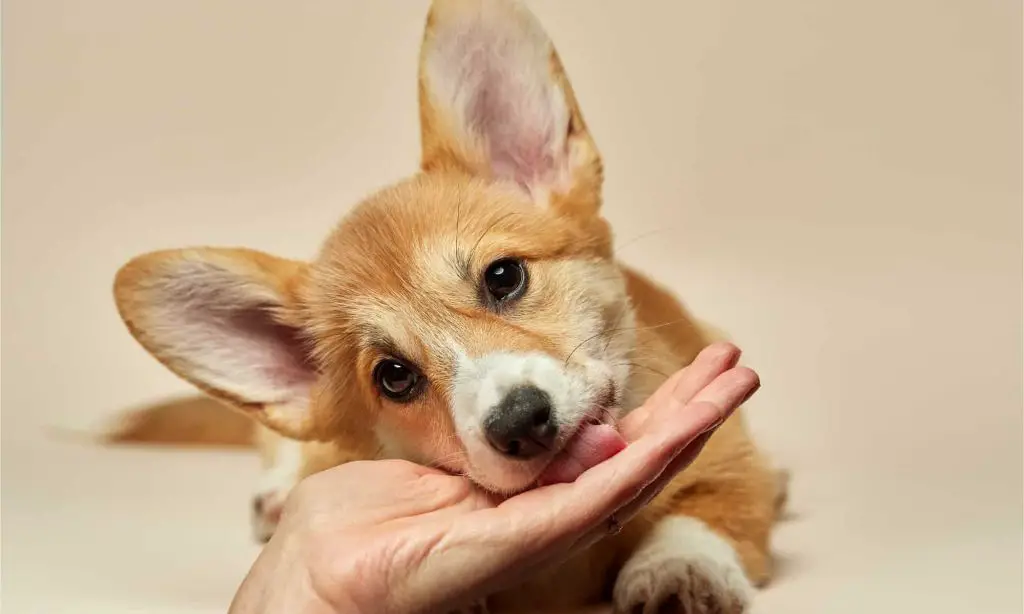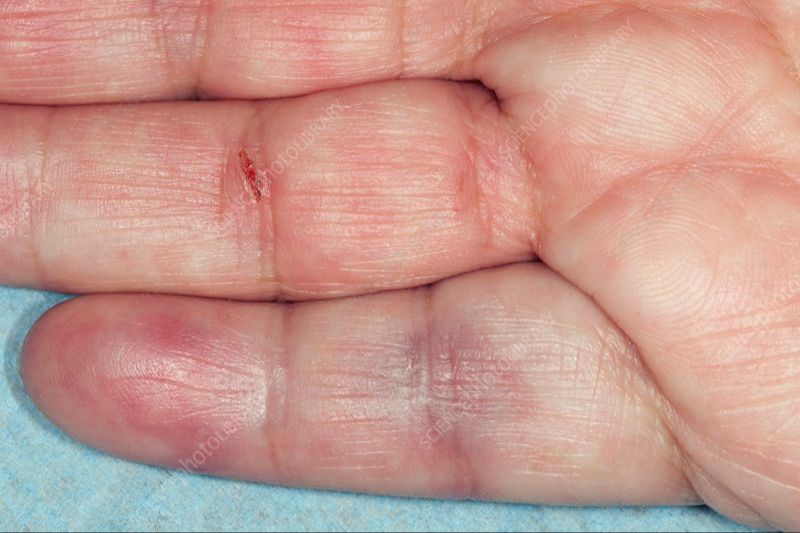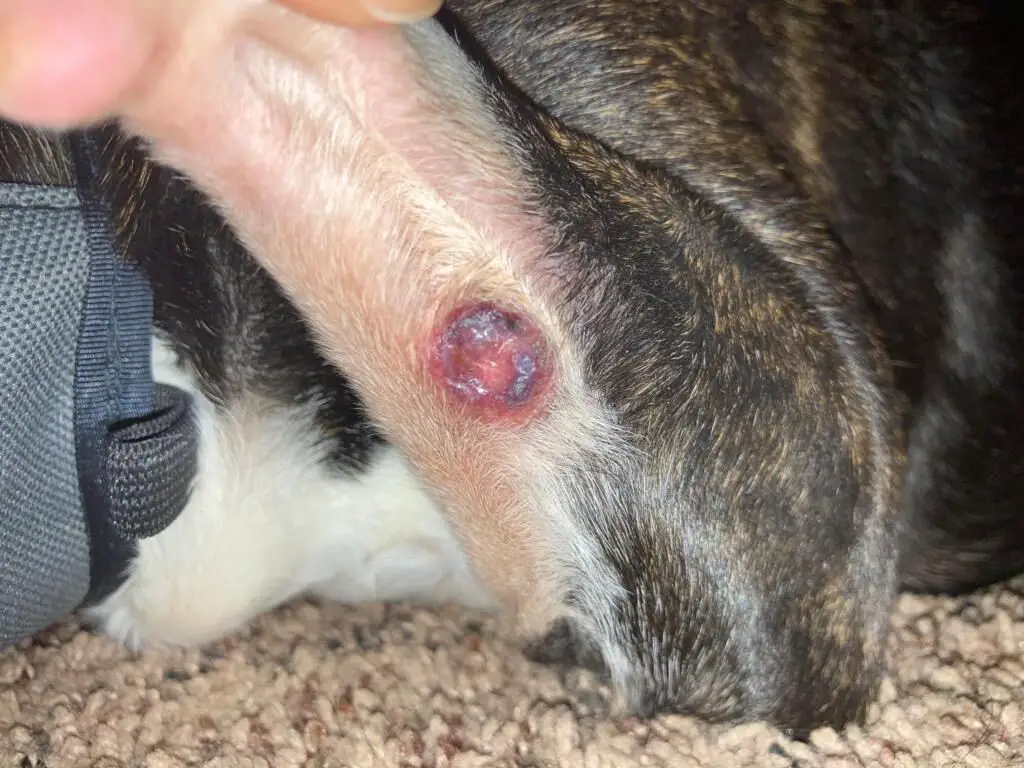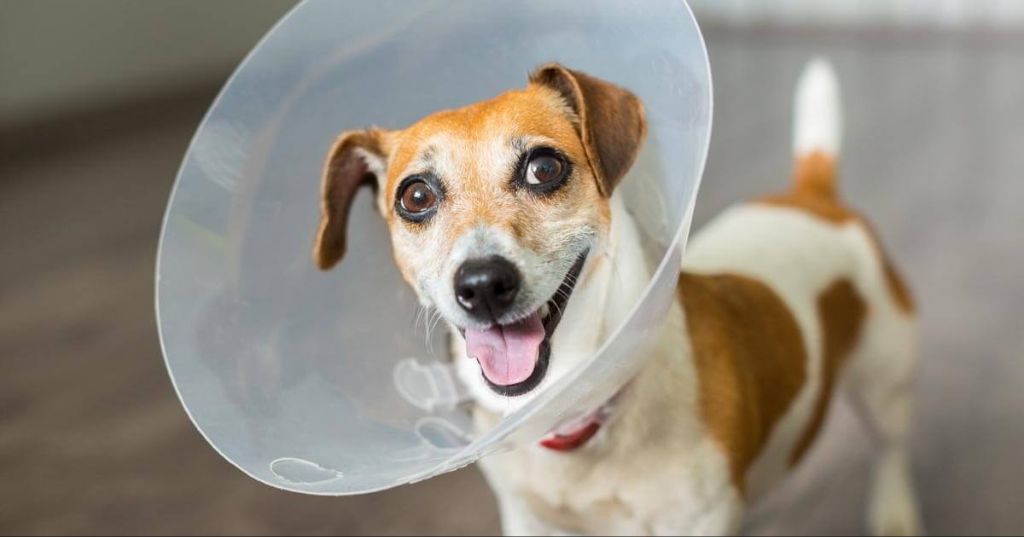Is It Good or Bad When Dogs Lick Wounds?
Most dog owners have experienced their canine companion licking a wound or scratch. It’s a common instinct for dogs to lick injuries, both on themselves and people. But is it helpful or harmful for dogs to lick human wounds? There are pros and cons to allowing this behavior.
Pros of Allowing It
Allowing your dog to lick your wound may seem like a caring, affectionate gesture in line with natural dog behavior. Dogs naturally lick wounds on themselves and each other as a self-soothing mechanism. So when your dog tries to lick your wound, it may be their innate way of trying to help you feel better too.

Some research indicates that compounds in dog saliva called growth factors can help promote wound healing. Dog saliva contains substances that kill bacteria, reduce inflammation, and speed up cell regeneration (source). So from an evolutionary standpoint, there may be benefits to letting dogs lick human wounds.
Cons of Allowing It
One of the biggest risks of allowing a dog to lick a wound is it can lead to infection. A dog’s mouth contains a high amount of bacteria, especially bacteria that live in their saliva like Pasteurella, Capnocytophaga, and others (Source). These bacteria from their mouth can be transferred into an open wound when they lick it, potentially causing an infection.
Some signs of infection from a dog licking a wound include redness, swelling, warmth, pus, and pain around the wound. Infected wounds may also have a foul odor. Allowing repeated licking can delay healing and cause more harm than good if bacteria is introduced.
When It Can Be Beneficial
Light licking of a wound by a dog can provide some cleaning benefits. A dog’s saliva contains chemicals like lysozyme and defensins that have some antibacterial properties, which may help prevent infection (PetMD). The motion of licking can also help remove debris and flush out dirt from a fresh wound.

However, too much licking can be problematic. More than just a light lick here and there may delay healing and increase risk of infection or complications. It’s best to discourage excessive licking of wounds.
When to Avoid It
You should avoid letting your dog lick open, bleeding, or surgical wounds. These types of wounds are vulnerable to infection, and a dog’s mouth contains a lot of bacteria that could be harmful. Licking can introduce germs into the wound and delay healing. The moisture from licking can also cause the wound to macerate or become overly wet. This destroys new cell growth and increases the risk of infection.
Open and bleeding wounds need proper first aid like cleaning, disinfecting, and bandaging to heal properly. Allowing licking can disturb blood clots and protective scabbing that naturally helps seal the wound. Surgery sites also have a high risk of infection and need to be properly cared for to avoid complications. Any interference with stitches or surgical glue can undo the closure.
It’s best to use an Elizabethan collar and limit access to wounds that are open, bleeding or post-surgery. This allows the wound to heal without disruption. Watch for signs of infection like redness, heat, swelling or discharge and contact your vet if they appear.
Signs of Infection
If a wound becomes infected after a dog licks it, there are several signs to look out for:
Redness – The skin around the wound will become red and inflamed, spreading outwards from the wound. This is a sign that the body’s immune system is fighting an infection.
Swelling – An infected wound will often become puffy and swollen as inflammation increases blood flow to the area. The wound itself may fill with pus.
Pus – Yellow or green fluid draining from the wound is a sure sign of infection. Pus contains dead white blood cells killed fighting the infection.
Fever – A fever over 100.4°F/38°C may accompany a spreading skin infection as the body tries to fight it off. Other flu-like symptoms are also possible.
Overall, redness, swelling, pus, and fever are key signs a dog lick has led to infection requiring medical treatment. Left untreated, the infection can spread to the bloodstream. 1
First Aid Treatment

If your dog has licked a wound, proper first aid is important to help prevent infection and promote healing. Here are some tips for cleaning, disinfecting, and bandaging the wound:
Cleaning: Gently flush the wound with saline solution or plain water to remove dirt, debris, and bacteria. Avoid using hydrogen peroxide or alcohol, as these can damage healthy tissue. Pat dry with a clean towel.
Disinfecting: Apply a veterinarian-recommended topical antibiotic ointment, such asbacitracin, neomycin, or polymyxin B. This will help kill bacteria and prevent infection. According to the AKC, topical antibiotics are safe for pets to lick (1).
Bandaging: Lightly wrap gauze around the wound to protect it. Make sure not to wrap too tightly, as restricting blood flow can inhibit healing. Especially if on a limb, check for normal color, warmth, and capillary refill in the toes/footpad. If bandaged, monitor closely for signs of damage/irritation and remove if needed. Allow at least 2 hours per day without the bandage to let the wound air out.
In addition to proper first aid, prevention is key. Use an Elizabethan collar and/or veterinarian-recommended bitter-tasting spray on the wound to deter licking. Seek prompt veterinary care if signs of infection develop.
Preventing Licking
The most effective way to prevent a dog from licking wounds is by using an Elizabethan collar or cone (https://www.innovetpet.com/blogs/dogs/dog-licking-wounds). This plastic cone fits around the dog’s neck and prevents them from being able to reach the wound to lick it. While some dogs dislike wearing a cone at first, they usually get used to it after a few days. It’s important to properly size and secure the cone so the dog can’t remove it.

You can also prevent licking by bandaging the wound (https://nextgenpaws.pet/blogs/news/how-to-stop-dog-from-licking-wound). Make sure to use a breathable self-adherent wrap that sticks to itself and not the dog’s fur. Wrap it snugly enough that the dog can’t pull it off, but not so tight that it restricts circulation. Bandages may need to be changed frequently.
Another option is distraction and supervision. Provide plenty of toys, chews, and attention to keep the dog occupied. When you can’t directly monitor them, crate or confine them to prevent access to the wound. You can also try bitter anti-lick sprays on the bandage or wound
When to See a Vet
In most cases, allowing a dog to lick a minor wound is not cause for major concern. However, if you notice signs of infection developing or persistent, excessive licking that won’t stop, it’s time to see a vet.
Signs of infection to watch out for include:
- Swelling, redness, or heat around the wound
- Pus or foul-smelling discharge from the wound
- Loss of appetite or lethargy
- Fever
According to veterinarians, licking can delay healing and cause harm if a wound gets infected. Bacteria from a dog’s mouth can lead to infection when introduced into an open wound. Therefore, if you notice any signs of infection, take your dog to the vet right away for treatment with antibiotics and professional cleaning of the wound (source).
Likewise, if your dog seems obsessed with licking at their wound constantly, it’s best to get them checked out. Excessive licking can further irritate the area and prevent proper healing. Your vet can provide solutions like an Elizabethan collar, bandages, or oral medication to manage excessive licking behavior.
Summary
In summary, there are some pros and cons to allowing your dog to lick your wound. On the plus side, dogs’ saliva contains substances that can promote healing. However, there are also risks of infection, including serious infections like rabies if the dog’s saliva enters an open wound.
The best advice is to avoid letting your dog lick an open wound whenever possible. It may be permissible to allow brief licking of small, superficial wounds that can be thoroughly cleaned afterwards. However, any deep wounds, burns, or wounds that won’t heal quickly on their own should absolutely be protected from licking to avoid complications.
If a wound does become infected or inflamed after a dog licks it, seek medical attention right away. And check with your vet if you notice persistent licking behavior, as it could signal an underlying health issue for your dog. While occasional licking may be natural canine behavior, it’s best to discourage licking of open wounds for both your health and your dog’s.